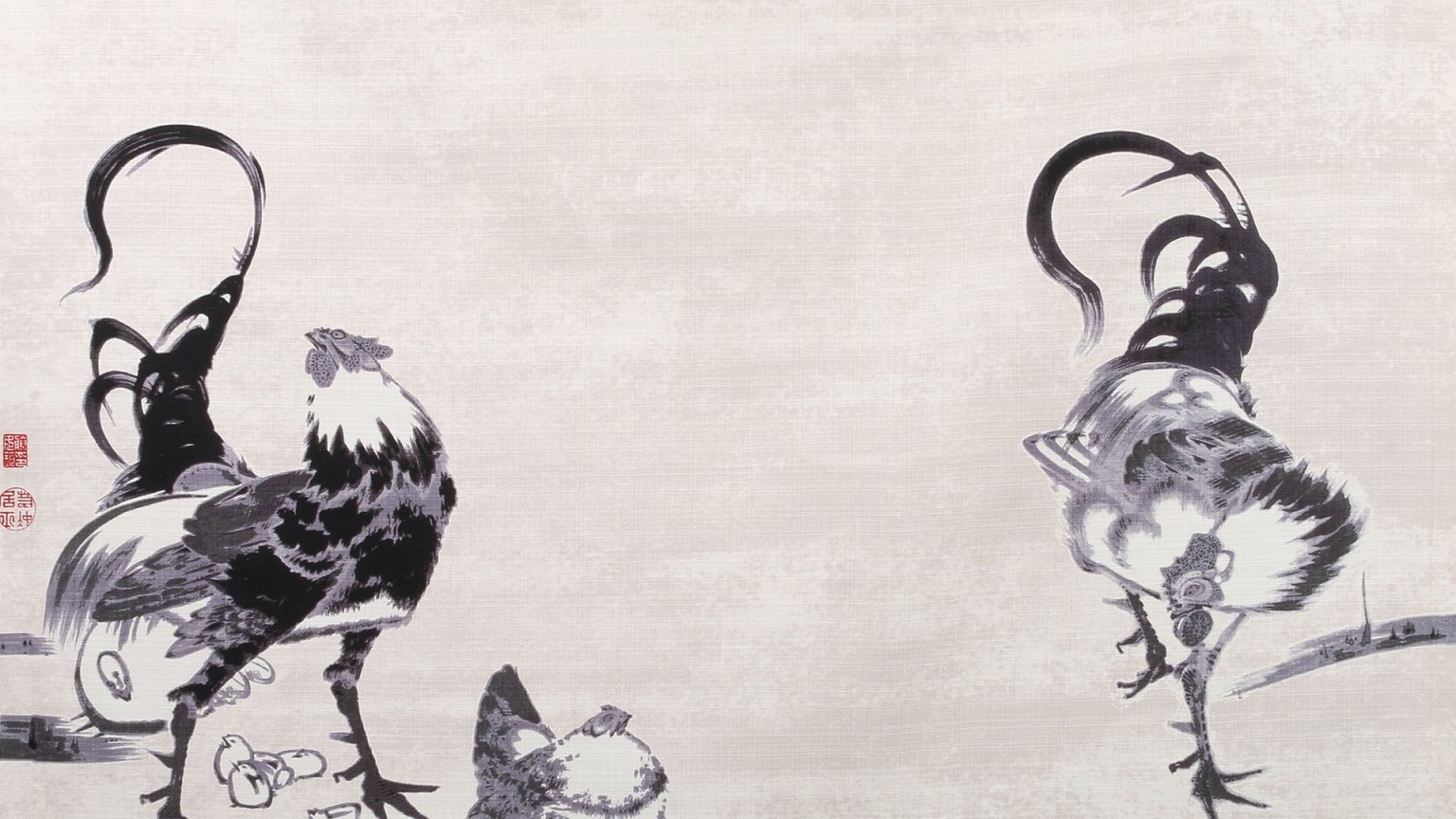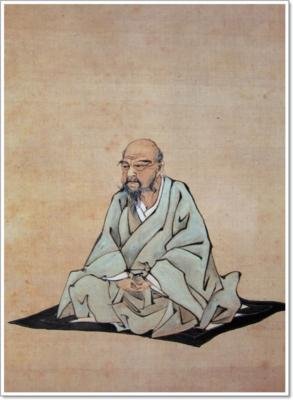VISIONARY KYOTO PAINTER JAKUCHU ITO
In eighteenth-century Japan, Kyoto experienced a flowering of culture and art unlike any other era, which scholars now refer to as Japan’s “golden age”, producing what is seen as the essence of traditonal Japanese art.
Jakuchu Ito (March 2, 1716 to October 27, 1800) was an artist born to the prosperous urban merchant class that supported this cultural efflorescence, raised in Nishiki, a busy market area commonly known even today as the center of downtown Kyoto. However, fame until now eluded him, with Jakuchu’s works being almost completely unknown until now.
The eldest son of a wholesale vegetable merchant, Jakuchu did not attend a school of art, as was the trend of the era, he was completely self-taught, and deeply passionate about painting. In place of art school, Jakuchu chose to enroll as a student of Zen Buddhism at Kyoto’s Shokoku-ji temple. It was this important time in his development spent at the temple, where Jakuchu would truly find his center as an artist, and was given his pseudonym “Jakuchu,” as a Buddhist lay-brother, or “koji” by the priests of the temple. Also worth noting, Jakuchu would be given special permission to not only paint there, but to take inspiration and be influenced by the temple’s vast collection of classic Chinese Yuan dynasty (960-1279) and Ming dynasty (1368-1644) paintings.
Jakuchu was to have made hundreds of sketches of all natural phenomena, in particular his family’s pet rooster and chickens, which he closely observed becoming some of his favorite subjects to paint. The above painting, “Rooster In The Snow”, is one of Jakuchu’s earliest known paintings, created while still actively working in his father’s business. Jakuchu depicts a lone rooster pausing for a moment, oblivious of the world, searching for food among the thickly-piled snow. The rooster being considered a “creature of virtue”, and in this outstanding rendering, Jakuchu’s meticulous attention to precision and detail bring the subject to life, the delicate brush-work suggests a style Jakuchu would continue to develop throughout his career.
From early on however, a life devoted to his love of painting, or a life following the trade of his father caused conflict for Jakuchu. When at age 23, his father suddenly passed away, Jakuchu was to be given no choice but to take full responsibility of running the family business, also keenly aware of his new position in Kyoto society. From this point, he now focused all of his precious spare time pursuing his deep passion for painting.
In addition to having personal clients, Jakuchu also took on commissions to paint panels and screens for many Buddhist temples and Shinto shrines across Japan, continuing to derive inspirations from nature.
In 1728, a rare event took place when an elephant was brought to Japan at the request of the 8th shogun, Tokugawa Yoshimune. It is said that the elephant was walked from Nagasaki to Edo (modern-day Tokyo). At that time, Jakuchu would have been about fourteen-years-old, and would have witnessed the elephant himself in Kyoto. As an adult, in “Birds, Animals, and Flowering Plants in an Imaginary Scene” his memory of the elephant, just as he may have sketched it, is carefully rendered.
A timeless masterpiece of unprecedented originality and imagination, it is a pair of six-panel folding screens, painted with pigments on paper. The surface of the painting is comprised of roughly 43,000 squares that are individually colored within each of the paintings’s panels. This unusual method of expression suggests Jakuchu understood the optical illusion of mixing color combinations within the squares, at a time before the art movements of Impressionism or Pointillism. His animal figures are vividly alive and alert within the scene, expressing a wit and playfulness characteristic of Jakuchu.
Birds, Animals, and Flowering Plants In An Imaginary Scene
While in his 30’s, Jakuchu continued to be deeply conflicted about his role as a merchant, and his life as a painter. However, this conflict was eventually solved by Zen priest Daiten, and the other priests of Shokoku-ji temple who admired Jakuchu’s works and recognized his talent. They supported and encouraged Jakuchu to retire, so that at the age of 40, Jakuchu was able to pass the family business to his younger brother, and devote himself completely to painting.
In a masterpiece which would take Jakuchu over 10 years to complete, “The Colorful World of Living Beings” is yet another example of his skill at fusing reality and imagination. Employing silk and mineral pigments of the highest quality, it is a set of thirty hanging scroll paintings, Jakuchu’s most renowned and highest artistic achievement. After its completion, the 30 piece work was originally a gift from Jakuchu to the Shokoku-ji temple, however after Jakuchu’s passing, it was placed in the Imperial Collection, eventually becoming a National Treasure of Japan.
Jakuchu was described by those who knew him as a solitary creature, his painting studio was even named “solitary nest.” When compared with other painters of the Edo-era, Jakuchu’s works seem to have very little in common with them, as he did not follow painting trends favored by the masses. This would eventually work in Jakuchu’s favor, giving him total freedom to develop, and experiment with different techniques on his own.
HEN WITH ROOSTERS
A devout Buddhist, Jakuchu practiced strong Zen Buddhist ideals. He was said to be very calm, reserved, interested only in his painting, and showed no interest in social affairs. He never drank alcohol, would not eat meat, and he also never married.
Jakuchu Ito left the art world a legacy of countless masterpieces, never losing his child-like curiosity and creative spirit. According to the modern-day neuroscientist Mogi Kennichiro, Jakuchu’s paintings are “pictures that bring pleasure to the brain, glorifying equally all forms of existence, and reveal to the viewer the essence of life. His paintings represent his determination to express the teachings that all forms of life possess the potential for enlightenment.”
Self-portrait of Jakuchu Ito
Following the Kyoto-Yuzen dyeing tradition, we at Pagong feel privileged to have been given official permission to use several paintings by Jakuchu Ito, which are now a part of our “Museum Collection.” We wish to breathe new freshness into these masterpieces in celebrating the 300th anniversary of the birth Jakuchu Ito.
-A collaboration with the Idemitsu Museum of Arts in Tokyo.




